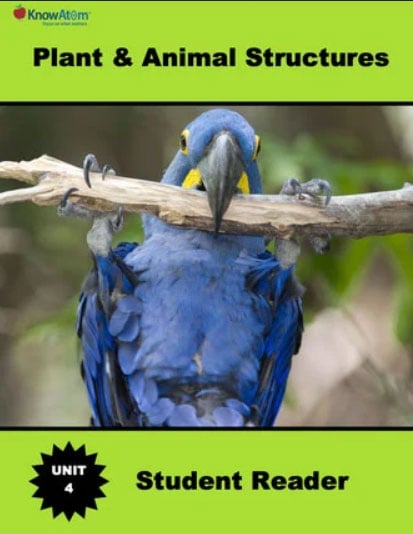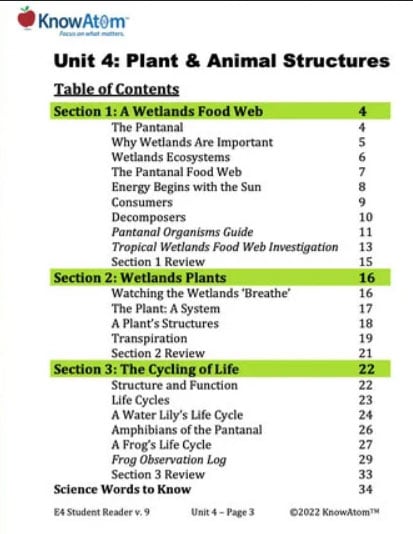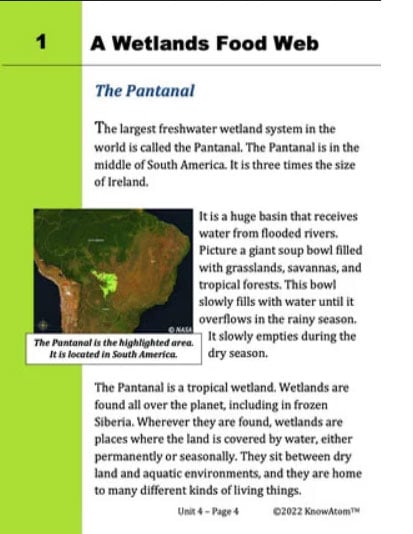The science background section provides teachers with more in-depth information on the phenomena students explore in this unit. Below is an excerpt from the science background for this lesson on food webs.
The Pantanal is the world’s largest freshwater wetland, three times the size of Ireland, covering parts of Brazil, Bolivia, and Paraguay. Wetlands are transitions between dry land and aquatic environments, places where the land is covered by water either permanently or seasonally. The Pantanal is covered by water seasonally: it has a wet season from November to March, and a dry season from April to October.
About 80 percent of the Pantanal is submerged during the wet season. This is because the Pantanal is a huge, gently sloped sedimentary basin. Water from rivers that form in the highlands to the north and east flows into this basin, flooding during the wet season. Picture a giant soup bowl that is slowly filled with water until it overflows. This is what happens in the rainy season, when up to 45 million gallons of water can enter the region every day. It slowly empties during the dry season, leaving much of the region with dry soils and sands.
Because of this, wetlands such as the Pantanal play an important role in the water cycle as water cycles between the atmosphere, surface water, and groundwater. They help to refill groundwater because wetlands act as natural sponges, storing water and then slowly releasing that water into aquifers. This can also help to reduce flooding.
Wetlands also improve water quality because they act as natural filters. For example, some plants take pollutants into their roots and change them into less harmful substances. By the time water has moved through wetlands, many pollutants have been removed. The roots of the plants also help to slow flood waters and reduce the amount of erosion that takes place.
All of Earth’s systems are connected in wetlands. For example, all wetlands have the ability to hold water, which encompasses the hydrosphere. They also have moist or wet soil, which connects the hydrosphere and the geosphere. Finally, they are home to water plants and other living things, connecting the hydrosphere, geosphere, and biosphere.
The interactions between the hydrosphere, geosphere, atmosphere, and biosphere are unique in the wetland ecosystem because of its transitional role between water and land. An ecosystem is a community of different organisms that depend on interacting with each other and their physical environment for survival. All ecosystems include living things; oxygen and carbon dioxide from the atmosphere; water; and energy from the sun.
Many different kinds of organisms are able to flourish in the wetlands ecosystem because it is rich in nutrients. In fact, wetlands such as the Pantanal have been called “biological supermarkets” because they are home to so many sources of food that a variety of organisms can survive there. For example, the Pantanal is rich in nutrients because of the seasonal flooding, which is caused by heavy precipitation that causes rivers to overflow their banks. This flooding carries with it enough nutrients to support the broad diversity of the Pantanal.










